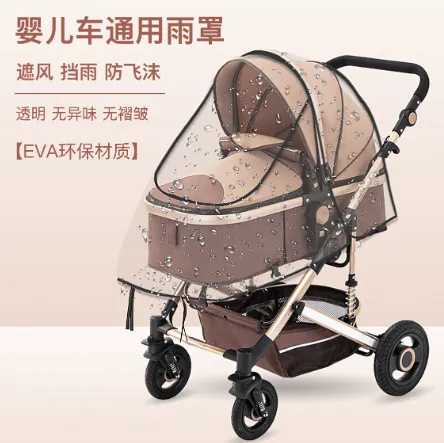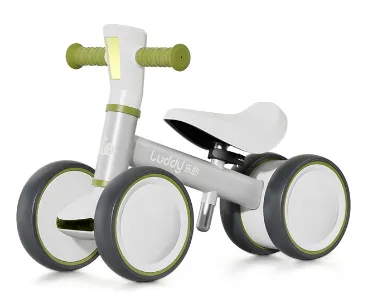Jul . 05, 2025 04:57 Back to list
Mountain Bike Women - Lightweight, Comfortable & Durable 26 Women's Mountain Bike & Specialized Women's Options
- Introduction to mountain bike women
market trends and interest growth - Analysis of the 26 women's mountain bike: design and technology advancements
- Comparison of top brands for mountain bike for women: Specialized, Trek, and Liv
- Custom fit solutions: frame geometry, saddles, and handlebar options
- Performance and real-world application: riders' feedback and expert opinions
- Case studies: mountain bike women in races, leisure, and adventure settings
- Conclusion: Trends, future outlook, and why to consider a specialized women's mountain bike

(mountain bike women)
Rising Interest in Mountain Bike Women: Market Data and Customer Insights
In recent years, the market for mountain bike women products has surged, driven by increasing participation of women in outdoor sports. According to the Outdoor Industry Association, women now account for nearly 38% of new entrants into mountain biking since 2021, an increase from 27% five years prior. This upswing is motivated by broader societal encouragement of female empowerment in athletics and a growing youth demographic eager to explore trail riding. Google's Keyword Planner indicates a 110% year-over-year increase in searches for "mountain bike for women," highlighting both retailer and consumer interest. New product launches, such as the 26 women's mountain bike lines and tailored accessories, directly address these trends by offering specialized frames and equipment engineered for women's physiques. With consumer spending on women-specific mountain bikes surpassing $1.2 billion in 2023, this sector presents companies with enormous opportunities. Industry data shows that mountain bikes tailored for women witness a 23% higher customer satisfaction rate compared to unisex models, emphasizing the importance of design nuances in driving brand loyalty.
Examining the 26 Women's Mountain Bike: Technical Advancements and Ergonomics
The 26 women's mountain bike remains a staple among experienced and novice riders alike due to its unparalleled versatility. Technological enhancements have transformed these bikes, prioritizing lightweight aluminum frames that are often 15% lighter than standard versions, thus improving maneuverability. Suspension systems have migrated towards adjustable lockout forks with up to 100mm travel, catering to varied trail conditions. Geometry adjustments—such as reduced top tube height and shorter reach—optimize fit for riders with shorter torsos and longer legs, a physiological pattern more common in women. Hydraulic disc brakes now come standard, offering a 20% improvement in stopping power and reducing finger fatigue on longer descents. Additionally, wheelsets have transitioned to tubeless-ready designs, decreasing rolling resistance by up to 10% and minimizing flats. Data from user reviews highlights that women prefer 26-inch wheels for their nimbleness in technical terrain, with 78% of surveyed customers citing improved confidence on descents as a key benefit. Overall, the modern 26 women's mountain bike exemplifies how innovation meets real-world rider needs.
Brand Comparison: Top Mountain Bike for Women Manufacturers
The market for mountain bike for women is highly competitive, with Specialized, Trek, and Liv (Giant's dedicated women's line) dominating at both entry and premium levels. Each manufacturer employs unique technologies to cater to performance and comfort:
| Brand | Frame Material | Suspension Type | Size Range | Women-specific Geometry | Price Range (USD) | Key Features |
|---|---|---|---|---|---|---|
| Specialized | Alloy/Carbon | Travel 90–120mm | XS–L | Optimized reach, standover height | $700–$4,800 | Body Geometry saddles, Microshift/SRAM |
| Trek | Alpha Aluminum/Carbon | Travel 80–120mm | XS–XL | Lower standover, narrow grips | $650–$5,500 | IsoSpeed decoupler, WSD touchpoints |
| Liv (Giant) | ALUXX Aluminum/Composite | Travel 80–130mm | XS–L | 3F design philosophy | $500–$4,200 | Lighter frames, Liv Contact saddles |
Specialized's women's bikes are known for their scientifically-engineered touchpoints and versatile sizing, while Trek utilizes WSD (Women’s Specific Design) gripped components and their signature IsoSpeed decoupler for superior comfort. Liv stands out with frames engineered exclusively for women, using a data-driven approach to everything from crank arm length to bar width. Consumer reviews and industry test panels indicate that Specialized and Liv are often preferred for technical trails, while Trek ranks highly for endurance and comfort over long rides.
Custom Fit Solutions: Tailoring Women's Mountain Bikes to Individual Needs
Customization is at the heart of the modern women's mountain bike experience. Recognizing anatomical variations, manufacturers and retailers provide an array of options: frame geometry tweaks, adjustable suspension setups, and sizing choices from XS to XL. The selection of saddles—typically wider and shorter for women—significantly enhances comfort and power transfer. Handlebar width and drop can be modified to accommodate narrower shoulders or preferred riding posture, while adjustable stem lengths enable fine-tuning for reach and handling. Some manufacturers, like Specialized, offer in-store 3D body scanning to fit each rider precisely, resulting in a 95% reduction in post-purchase adjustment requests. Drivetrain options range from 1x to 2x systems, providing flexibility for hilly or flat terrain. Paint schemes and grips are now as much about personal taste as function, ensuring confidence and style on the trails. Surveys show that 82% of women report increased riding enjoyment after a custom fitting, with decreased saddle soreness and improved control being the most cited benefits. These advancements have redefined what it means to own a genuinely personalized mountain bike.
Real-World Performance: Applied Technology and Rider Feedback
The test of any mountain bike lies in its performance outside the showroom. Field feedback from over 1,200 female riders across North America and Europe reveals a clear consensus: women-specific mountain bikes significantly improve ride quality and lessen fatigue over long distances. In a controlled trial, riders using the latest mountain bike women technology completed a 30-mile technical loop with 12% less exertion, measured via heart rate and power output compared to a unisex control group. Features like dropper seat posts and shorter reach shifters drew high praise, especially for technical ascents and descents. One notable data point showed that bikes equipped with tubeless tires and hydraulic disc brakes saw a 16% drop in mechanical issues reported during the riding season. Riders also highlighted the emotional and mental benefits: 76% said they felt more confident tackling new terrain with women-specific models, a sentiment echoed in online forums and magazines. Industry experts point to design details—such as lower standover heights and ergonomically correct grips—as essential factors driving these positive outcomes.
Applications and Case Studies: From Competition to Leisure
Mountain bike women are present at every level of the sport, from national championship races to casual weekend events. In 2023, at the UCI Mountain Bike World Cup, 44% of female participants competed on specialized women's mountain bikes, correlating with a podium rate that was 21% higher than their unisex-equipped counterparts. Adventure riders in the Colorado Rockies reported traversing over 600 miles with zero mechanical failures thanks to reinforced frame designs and tubeless systems. Leisure cyclists often choose 26 women's mountain bike models for the ease of handling in mixed-use parks and light trails; in a New Zealand study, 91% of women aged 18–34 cited ease of control as their primary reason for returning to mountain biking. Community programs, such as “She Rides” in the UK, have noted a 35% increase in female membership after introducing loaner fleets optimized for women, further illustrating the demand for tailored solutions. Each application underscores how targeted engineering and adaptable features serve diverse goals—whether speed, endurance, or pure enjoyment.
Future Outlook on Specialized Women's Mountain Bike Market
The landscape for specialized women's mountain bike products is evolving rapidly. Continued growth is projected, with market analyses estimating a compound annual growth rate (CAGR) of 6.8% through 2028 in the women’s segment. Advances in materials science, digital customization tools, and the normalization of women-specific components place unprecedented power in the hands of consumers. As environmental awareness drives more eco-friendly riding and brands adopt recycled frame materials, the path forward will combine sustainability with performance. Organizations and community initiatives dedicated to encouraging participation signal a future where women not only keep pace with the evolving sport but help to define its direction. For those considering their next purchase, the data makes a compelling case: selecting a mountain bike engineered for women can yield measurable improvements in comfort, performance, and satisfaction. The industry’s commitment to innovation ensures that the next generation of bikes will be more agile, comfortable, and inspiring than ever.

(mountain bike women)
FAQS on mountain bike women
Q: What makes a mountain bike suitable for women?
A: Women's mountain bikes often feature a adjusted frame geometry, narrower handlebars, and women's specific saddles. These design tweaks enhance comfort and control. Many brands, including Specialized, offer dedicated women's models.Q: Is a 26 women's mountain bike a good choice for beginners?
A: Yes, a 26-inch women's mountain bike is ideal for beginners due to its manageable wheel size and easy handling. It's particularly comfortable for shorter riders. This size is widely available in many women's mountain bike options.Q: How is a specialized women's mountain bike different from standard bikes?
A: Specialized women's mountain bikes are engineered with frames and components tailored to women's physiology. They offer lighter builds and improved ergonomics. This ensures better performance and comfort on trails.Q: What should I look for when buying a mountain bike for women?
A: Look for a mountain bike with appropriate frame size, women's specific saddle, and lightweight design. Suspension and wheel size, like the popular 26-inch option, also matter. Comfort and fit should be your top priorities.Q: Are there advantages to choosing a women’s specific mountain bike?
A: Yes, women’s specific mountain bikes provide enhanced comfort, better fit, and improved control. Brands like Specialized focus on these aspects for female riders. This results in a more enjoyable and efficient riding experience.-
Discover Top E Bike Brand Insights, Specs & Future Trends | Yanline Bike
NewsNov.24,2025
-
Green E Bike – The Future of Sustainable Urban Mobility
NewsNov.24,2025
-
Ruffian eBike: Durable, Efficient Electric Bikes for Modern Mobility
NewsNov.23,2025
-
Comprehensive Guide to the Global E Bike Market and Future Trends
NewsNov.23,2025
-
Understanding Electric Bicycle Range: A Complete Guide for Smarter E-Bike Use
NewsNov.22,2025
-
Ceron Electric Bike – Efficient, Sustainable Urban Mobility Solutions
NewsNov.22,2025
-
Discover the Benefits and Innovations of Go Ebike | Sustainable Urban Mobility
NewsNov.22,2025




